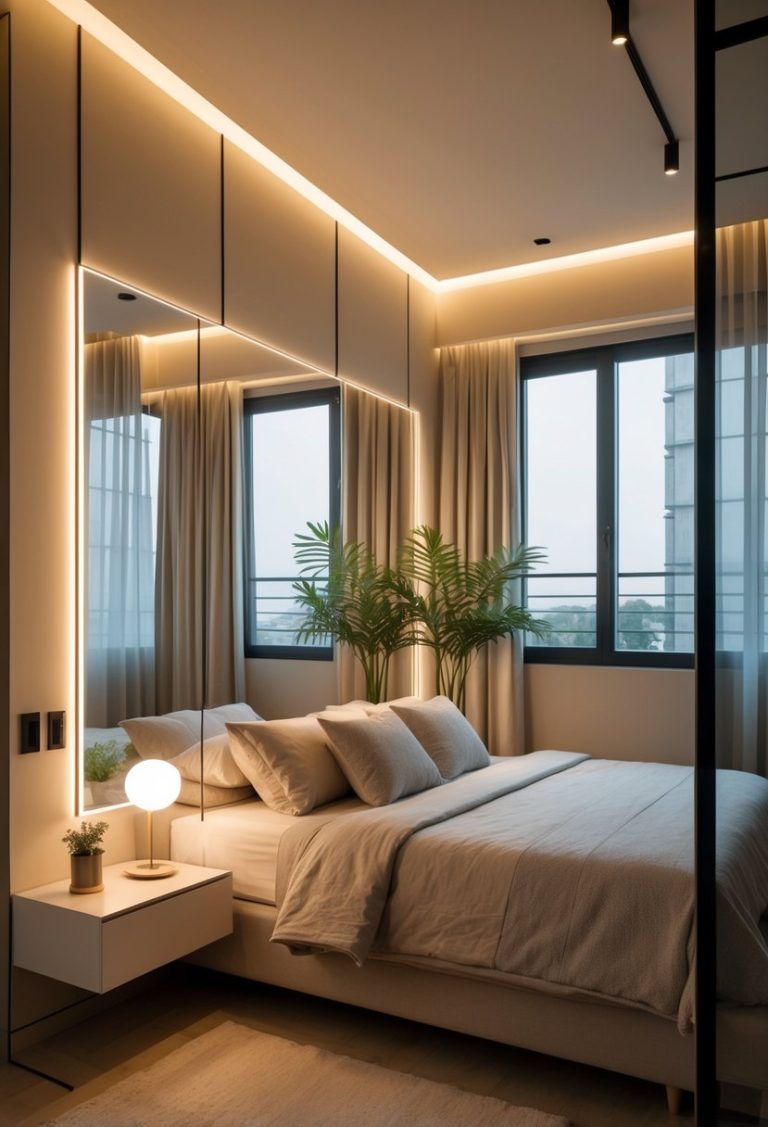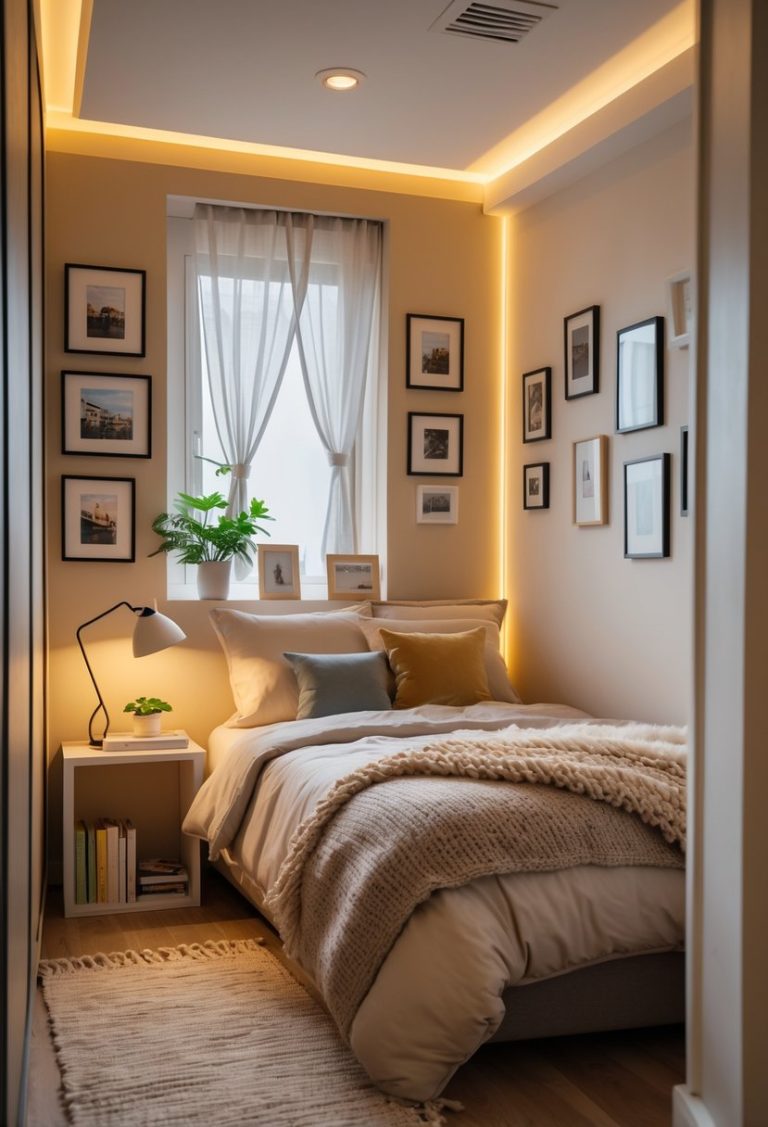How to Decorate a Bedroom Aesthetic: Simple Tips for a Stylish Space
Decorating a bedroom aesthetic means creating a space that reflects your personality and feels comfortable to you. The key is to choose a style or vibe that matches your taste and then add simple, thoughtful design elements like colors, furniture, and decorations that support that feeling. This doesn’t have to be complicated—small changes can make a big difference in how your room looks and feels.

When I decorate my bedroom, I focus on making it both personal and cozy. This could mean mixing trendy ideas with my own style or picking a theme that suits my mood, like modern boho or minimalist. The right lighting, textures, and plants often help bring the whole look together and make the room inviting.
Choosing Your Bedroom Aesthetic

Picking the right style for your bedroom starts with knowing what kind of space you want. I focus on popular design styles, ways to find ideas that fit me, and how to keep my room both useful and attractive.
Popular Bedroom Styles
There are many bedroom styles to choose from, each giving a unique feeling. Some common ones include:
- Minimalist: Clean lines and few decorations. It feels calm and uncluttered.
- Boho: Bright colors, mixed patterns, and lots of textures. It looks relaxed and creative.
- Modern: Sleek furniture and neutral colors. It feels fresh and simple.
- Cottagecore: Soft colors with natural and vintage touches. It has a warm, cozy vibe.
I pick a style that matches my personality. Choosing a clear style helps me decide colors, furniture, and decor.
Finding Your Inspiration
To find the right aesthetic, I look around for ideas. I check social media, magazines, and websites for bedroom photos that catch my eye. I also think about what makes me feel calm or happy at home.
I like to save pictures and note colors or styles I keep coming back to. Sometimes, I mix ideas from different places. The goal is to create a space that feels like mine but also looks good.
I also consider my daily routine to see what kind of furniture and setup support how I live.
Balancing Functionality and Style
A bedroom must be comfortable and practical, not just pretty. I choose furniture that fits my space and daily needs—like a bed that’s the right size and storage for my clothes.
Lighting is important too. I go for lights that match my style but also help me read or relax. Soft curtains and cozy rugs add comfort without cluttering.
I try to keep a good balance by picking pieces that look nice but are useful. This makes my bedroom both beautiful and livable.
Color Palettes and Lighting

Choosing the right colors and lighting shapes the mood and feel of a bedroom. Using balanced palettes, textured walls, and the right light sources can make the room feel larger, cozier, or more stylish.
Selecting Harmonious Color Schemes
I focus on picking colors that work well together. Lighter shades like soft grays, pale blues, or warm whites can make a small bedroom feel bigger and more open. Darker tones, such as deep navy or forest green, add warmth and create an intimate vibe.
I usually start with a base color for the walls. Then, I pick two or three complementary colors for furniture, decor, and bedding. This creates a consistent look without being boring. I avoid clashing tones and try to balance cool and warm shades.
A simple way to find harmony is using a color wheel. Colors next to each other or directly opposite can usually pair nicely. Neutral colors like beige, cream, and taupe also work well with almost any accent color.
Accent Walls and Textures
Adding an accent wall can bring focus and personality to the room. I recommend picking one wall, often behind the headboard, and painting it a bold or contrasting color. This breaks the monotony and adds depth.
Textures on walls or in textiles also change how color feels in the space. Matte paint looks different than glossy. Layering fabrics like velvet curtains, knitted throws, or woven rugs adds tactile comfort and visual interest.
Using patterns, like stripes or subtle geometric shapes, can enhance the accent wall. Wallpaper or textured paint finishes are good options if you want something unique without too much effort.
Optimizing Natural and Artificial Lighting
Good lighting can highlight your color choices or make them dull. I always start by maximizing natural light with sheer curtains that soften but don’t block sunlight.
I use a mix of overhead lights, task lamps, and mood lighting to control brightness. Warm LED bulbs help create a welcoming atmosphere without harsh glare. Dimmable lights offer flexibility for different times of day.
Placement matters too. Position lamps so they don’t cast strong shadows or cause glare near mirrors. String lights or small LED strips can add subtle charm, especially around shelves or behind the headboard.
Decorative Elements and Furnishings

To create an aesthetic bedroom, I focus on choosing pieces that blend style and comfort. Each element works together to build the room’s look and feel. I pay attention to furniture shapes, wall art, fabric choices, and small details that make the space unique.
Statement Furniture Pieces
I believe statement furniture acts as the bedroom’s centerpiece. A bold bed frame with interesting shapes or colors can define the room. I often select beds with upholstered heads or carved wood for a stylish touch.
Other key pieces include a nightstand with clean lines or a vintage dresser. Multifunctional furniture, like storage ottomans or bench seats, adds both usefulness and style. Choosing timeless, quality materials helps the furniture last while keeping the aesthetic fresh.
Art and Wall Decor
Art and wall decor bring personality into the room. I prefer pieces that match the overall color scheme and mood. For example, prints with soft pastels work well in calm, cozy spaces.
Mirrors are essential too. They reflect light and make the room feel bigger. Fairy string lights can be hung around windows or mirrors to add a gentle glow and decorative touch. I avoid clutter by picking a few well-placed items rather than crowded walls.
Textiles and Soft Furnishings
Soft furnishings create texture and comfort. I layer bedding with different materials like cotton sheets, knit throws, and velvet pillows. This mix makes the bed inviting and visually interesting.
Curtains should complement the room’s colors and filter light softly. Rugs add warmth and tie furniture together. I choose calming tones or subtle patterns to maintain balance without overwhelming the space.
Decorative Accessories
Small accessories complete the look. I use green plants to bring life and freshness into the room. They also improve air quality, which is a bonus.
Decor items like candles, vases, or quirky figurines add charm. I keep these pieces organized on shelves or dressers to maintain a neat look. Lighting accessories, like table lamps with soft bulbs, help set a relaxing mood.
Personal Touches and Maintenance

Making a bedroom truly yours means adding items that feel meaningful and keeping the space neat. It also means knowing how to update the look without starting from scratch. These steps help create a room that feels comfortable and stays fresh over time.
Incorporating Personal Items
I like to add things that show who I am. Photos of family and friends, favorite books, or art pieces that inspire me make the space feel warm. Using personal mementos or handmade crafts adds character.
I usually pick a few special items instead of cluttering the room. For example:
- A gallery wall with photos and prints
- A shelf with souvenirs or small plants
- A cozy throw blanket I love
These touches make the room unique to me without overwhelming it.
Keeping Your Space Organized
Keeping a bedroom tidy is key to maintaining its aesthetic. I use storage solutions that blend with my style, like woven baskets for smaller items or under-bed storage boxes.
Daily habits help too. I spend a few minutes each day putting things back in place. Clutter can ruin the calm vibe, so I avoid piling up clothes or papers.
Simple organization tools, like drawer dividers or decorative trays, keep my things accessible and neat while matching the room’s look.
Refreshing the Bedroom Aesthetic
To keep my room feeling new, I swap small decor pieces seasonally. Changing pillows, curtains, or wall art can brighten the space without a full makeover.
Adding plants or switching light bulbs to warmer tones also refreshes the mood. Sometimes, repainting a wall or rearranging furniture gives the room a fresh feel.
I keep a list of ideas for quick updates. That way, I can refresh my space easily whenever it starts to feel stale.


